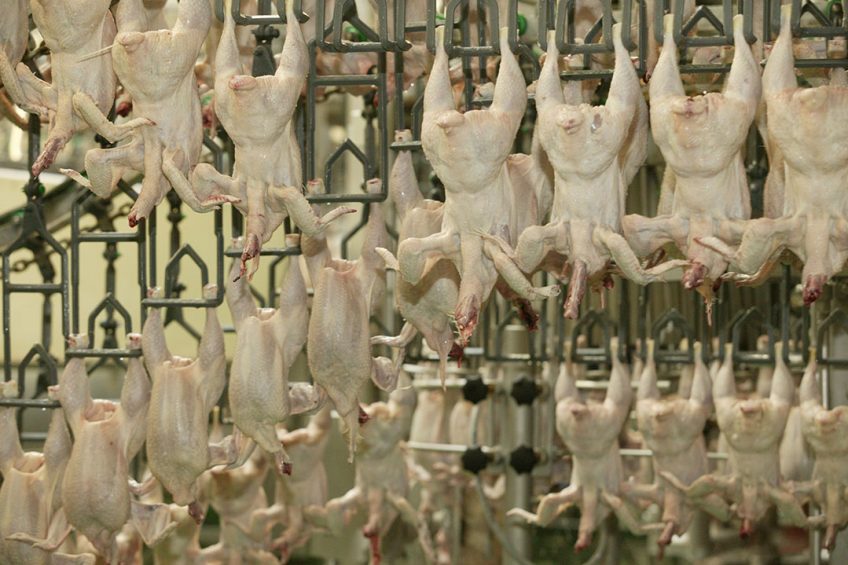Effect of digestible lysine density in broiler feed

Results of feed trials indicate that altering dietary dLys during critical periods of the growth traject may be a viable strategy for reducing the incidence and severity of wooden breast and white striping.
Worldwide there is an increase in occurrence of broiler breast quality defects known as wooden breast and white striping. Wooden breast, a characteristic toughness caused by abnormal accumulation of connective tissue and fluid. is easily recognised and causes undesirable texture, which also affects the quality of raw and further processed products. Fillets affected by white striping have visible deposits of intermuscular fat in a pattern of striations that appear parallel to the muscle fibres.
Genetic selection for increased breast meat yield, but also non-genetic factors, such as environment and nutrition, contribute to the majority of the observed myopathies. For practical interventions non-genetic factors may be more suitable targets aimed at reducing the incidence and severity of these myopathies. Quantitative nutrient allocation has been shown to reduce the incidence of these quality defects through this quantitative feed control.
Breast muscle exhibits pronounced responses to differences in dietary dLys, from regulation of protein turnover at the cellular level to yield responses at the processing plant. Furthermore, feed-grade Lys is frequently supplemented in poultry diets and therefore may be easily removed from the diet. Diets formulated with dLys at approximately 70 and 63% of the recommended concentrations, have shown reductions in wooden breast and white striping.
Although this dietary strategy reduced the incidences of myopathy, extreme reductions in dLys were deleterious to live performance and breast yield. However, moderate reductions in dLys over shorter periods of time may suffice to reduce myopathies without these negative effects.
Two experiments to evaluate the effects of short-term reductions in dLys concentrations on performance, processing characteristics, and the incidence of wooden breast and white striping in broilers processed at 48 and 62 days of age were conducted. All birds received an identical starter diet until 11 d of age; dietary treatments from 100 to 75% of the recommendations for dLys were tested in 11 test groups and continued to 48 and 62 days of age. Ideal amino acid ratios were not maintained in reduced dLys diets. At 48 and 62 days of age, selected birds were processed and fillets were visually scored for wooden breast and white striping. No differences in live performance responses were observed; in both experiments the incidence of severe wooden breast and white striping, whether at 48 or 62 days of age was reduced at the expense of reduced breast weights and yield in the group with 48 days old broilers.
Author: By K. J. Meloche, B. I. Fancher, D. A. Emmerson, S. F. Bilgili and W. A. Dozier, 2018 Poultry Science













